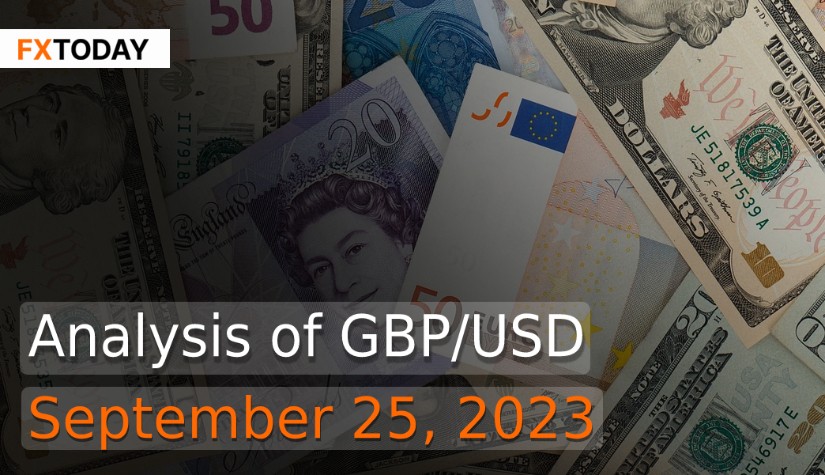BoE Keeps Interest Rates Steady Despite Economic Shifts
The Bank of England (BoE) made a surprising decision to maintain its interest rates at 5.25%, ending a series of rate hikes that began in December 2021. This move was driven by unexpected low inflation figures in August, despite rising oil prices and some job market weaknesses. The BoE's decision aligns with the recent stance of the US Federal Reserve to pause rate increases.
Data published on Thursday indicated an increase in public borrowing in the first five months of the tax year, limiting the scope for significant tax cuts later in the year. During the April to August timeframe, public sector net borrowing surpassed the previous year's figures. Nevertheless, it fell short of what official fiscal forecasters had anticipated.
Even though this data hinted at a possible economic deceleration, it might also have an impact on decreasing tax revenues. The Office for Budget Responsibility was projected to adjust its assessments for debt interest expenditure in the forthcoming budget announcement scheduled for November.
Moreover, the decision by the Bank of England to maintain interest rates had immediate effects on mortgage holders and first-time buyers. Despite the reductions, the average two-year fixed-rate residential mortgage only saw a slight decrease, while the average five-year fixed rate dropped from 6.07% to 6.06%.
The decision to maintain the rates was primarily influenced by a surprising drop in inflation to 6.7%, which was announced a day before the BoE's announcement. However, high inflation rates persisted in the UK, although core inflation, which excludes volatile food and energy prices, decreased to 6.2%. Service sector inflation also slowed to 6.8%, indicating some relief.
The BoE left open the possibility of future rate hikes, pledging to make necessary decisions to bring inflation back to a 2% level. Economists and mortgage brokers believed that further rate increases were unlikely and that rates might have already reached their peak.
Following the BoE's decision, the UK economy displayed signs of recession. A business survey factored into the central bank's choice to maintain rates showed a challenging September for companies, marked by increasing unemployment. The UK S&P Global Purchasing Managers' Index for the services sector hit its lowest level since January 2021, and job indicators experienced significant declines.
A separate survey by the Confederation of British Industry (CBI) indicated a decline in factory output, with expectations of stagnation for the remainder of 2023. Despite the potential impact of the BoE's rate hikes and the weakening job market, relief from lower inflation and the belief that borrowing costs might have peaked suggested that the economy could avoid a severe downturn.
Consumer demand remained resilient, with sales volumes rising month-to-month six times in 2023. Consumer confidence was at its highest since January of the previous year. However, the full impact of the BoE's consecutive rate hikes had yet to materialize, potentially affecting consumer spending later in the year.
In the United States, business activity showed little change in September, with the services sector operating at its slowest pace since February. New order activity reached its lowest level of the year. Yet, the US economy had contradicted predictions of a recession, as it witnessed robust job growth, especially in the services sector, increased consumer spending, and a decline in inflation rates. Nevertheless, the Federal Reserve's choice to maintain elevated interest rates well into the following year could hamper economic progress. Consequently, this could lead to the pound maintaining relative stability and fluctuating within a certain range as British yields closely track those of the US. Meanwhile, there is a potential for a modest strengthening of the US dollar, driven by the relatively stronger US economy compared to the UK.
Data for Technical Analysis (5H) CFD GBP/USD
Resistance : 1.2258, 1.2265, 1.2275
Support : 1.2238, 1.2231, 1.2221
5H Outlook
Source: Investing.com
Buy/Long 1 If the support at the price range 1.2228 - 1.2238 is touched, but the support at 1.2238 cannot be broken, the TP may be set around 1.2258 and the SL around 1.2223, or up to the risk appetite.
Buy/Long 2 If the resistance can be broken at the price range of 1.2258 - 1.2268, TP may be set around 1.2280 and SL around 1.2233, or up to the risk appetite.
Sell/Short 1 If the resistance at the price range 1.2258 - 1.2268 is touched, but the resistance 1.2258 cannot be broken, the TP may be set around 1.2231 and the SL around 1.2273, or up to the risk appetite.
Sell/Short 2 If the support can be broken at the price range of 1.2228 - 1.2238, TP may be set around 1.2210 and SL around 1.2253, or up to the risk appetite.
Pivot Points Sep 25, 2023 02:46AM GMT
| Name | S3 | S2 | S1 | Pivot Points | R1 | R2 | R3 |
|---|---|---|---|---|---|---|---|
| Classic | 1.2204 | 1.2221 | 1.2231 | 1.2248 | 1.2258 | 1.2275 | 1.2285 |
| Fibonacci | 1.2221 | 1.2231 | 1.2238 | 1.2248 | 1.2258 | 1.2265 | 1.2275 |
| Camarilla | 1.2234 | 1.2237 | 1.2239 | 1.2248 | 1.2244 | 1.2246 | 1.2249 |
| Woodie's | 1.2200 | 1.2219 | 1.2227 | 1.2246 | 1.2254 | 1.2273 | 1.2281 |
| DeMark's | - | - | 1.2226 | 1.2246 | 1.2253 | - | - |
Sources: Investing 1, Investing 2
Maximize your knowledge: Blog
















